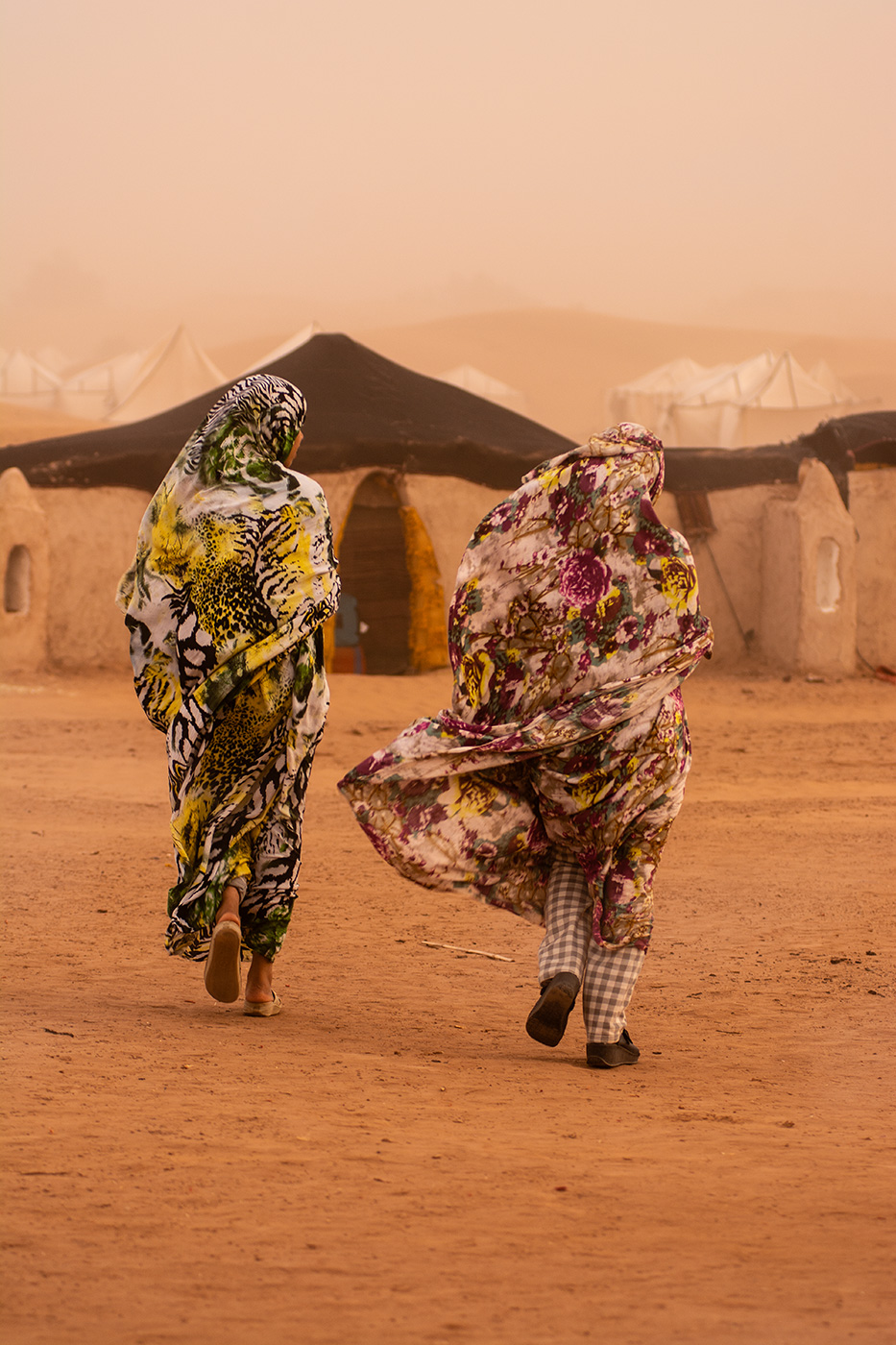 I could hear the sandstorm gathering strength overnight, as the tent poles swayed and creaked in the wind. By the time I stepped outside the following morning, the granular, yellow air had coated every surface. Violent gusts flicked and puckered the peaks of the dunes, sending rivulets of dust dancing across the sand.
I could hear the sandstorm gathering strength overnight, as the tent poles swayed and creaked in the wind. By the time I stepped outside the following morning, the granular, yellow air had coated every surface. Violent gusts flicked and puckered the peaks of the dunes, sending rivulets of dust dancing across the sand.
The small oasis town of M’Hamid El Ghizlane on the edge of the Sahara in South Morocco, was once the meeting place for traditional trans-Saharan caravans, where nomadic traders gathered with their camels, before setting off on the fifty-day journey to Timbuktu in Northern Mali. Today, the region faces a serious environmental crisis, as unpredictable weather patterns, drought, flash floods, sandstorms and desertification threaten the delicately balanced ecosystem that has sustained this area and its communities for hundreds of years. The Sahara is expanding north, gradually consuming valuable arable land, affecting vegetation, soil quality, water resources, and the ability to farm. Abandoned dwellings start to crumble, reclaimed by the dunes - a stark reminder of both the hostility and vulnerability of the desert.
I've been travelling to M'Hamid El Ghizlane since 2013 to photograph the Taragalte Festival, created by Ibrahim and Halim Sbai in 2009. The ethos of the festival is to protect the fragile desert environment, preserve the region's rich cultural and nomadic heritage, and raise awareness, both locally and globally, of the challenges affecting the communities who live here. The annual gathering is a high point in the local calendar, attracting large and enthusiastic audiences, who are joined by visitors from across North and West Africa, Europe, and beyond. It has inspired many musicians who have collaborated, performed and even recorded in this unique setting in the dunes.
The opening ceremony of the festival evokes the atmosphere of the traditional Moussem, which marked the culmination of the date harvest. Musicians beat out captivating rhythms on drums and krakebs (large metal castanets), interspersed with hypnotic call and response chants. Young women with beaded headbands apply lipstick and kohl eyeliner, before joining the men to dance and sing. A Touareg, standing on a camel's back, dances with jerky, bird-like movements, arms outstretched, his flowing robes catching the breeze. Camels race across the plain at dusk, scattering the crowds to either side. Each evening, on a temporary stage nestled in the dunes, grainy Desert Blues guitar riffs meet soulful melodies and infectious dance rhythms. And late into the night, the Petit Prince Bivouac holds the memories of songs and stories shared around the fire.
There are many people and organisations committed to protecting this precious desert environment and its culture. Sahara Roots Foundation runs a tree-planting programme to combat the effects of desertification. Two Moroccan NGOs - Zero Zbel and Spiralium - focus on waste management and pollution. The women of M'Hamid have revitalised traditional carpet weaving for a contemporary market through Carpet of Life, and young people are at the heart of the Joudour Sahara Music Programme, a project of the Playing for Change Foundation. A grant from the US Ambassadors Fund for Cultural Preservation supported the creation of a digital archive project - the Musical Heritage of the Southern Draa Valley. And the Cultural Caravan for Peace uses music and the arts to promote dialogue, cultural exchange and social cohesion in the Sahel and Sahara regions.
The raw beauty and uncompromising energy of the desert demands presence and acceptance, instilling a vital understanding of shared humanity, generosity and community. M'Hamid has held onto its identity as a place of welcome and refuge, and continues to draw me back year after year.



































